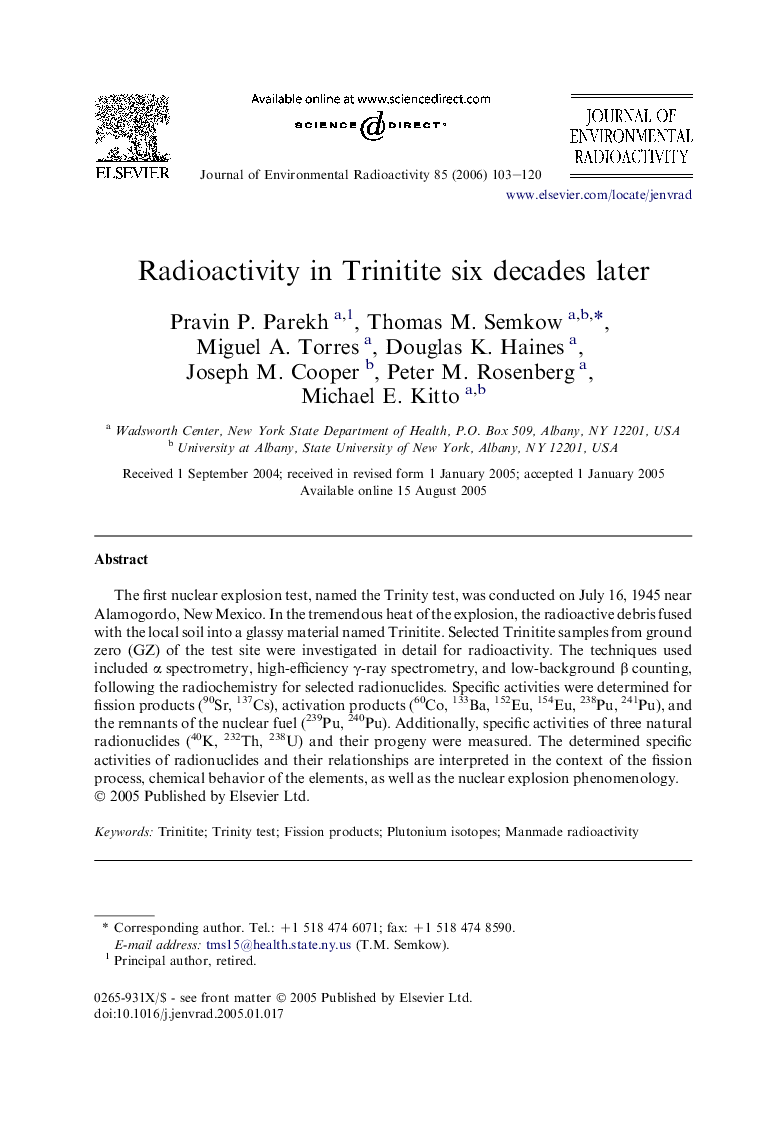| Article ID | Journal | Published Year | Pages | File Type |
|---|---|---|---|---|
| 1739671 | Journal of Environmental Radioactivity | 2006 | 18 Pages |
The first nuclear explosion test, named the Trinity test, was conducted on July 16, 1945 near Alamogordo, New Mexico. In the tremendous heat of the explosion, the radioactive debris fused with the local soil into a glassy material named Trinitite. Selected Trinitite samples from ground zero (GZ) of the test site were investigated in detail for radioactivity. The techniques used included α spectrometry, high-efficiency γ-ray spectrometry, and low-background β counting, following the radiochemistry for selected radionuclides. Specific activities were determined for fission products (90Sr, 137Cs), activation products (60Co, 133Ba, 152Eu, 154Eu, 238Pu, 241Pu), and the remnants of the nuclear fuel (239Pu, 240Pu). Additionally, specific activities of three natural radionuclides (40K, 232Th, 238U) and their progeny were measured. The determined specific activities of radionuclides and their relationships are interpreted in the context of the fission process, chemical behavior of the elements, as well as the nuclear explosion phenomenology.
